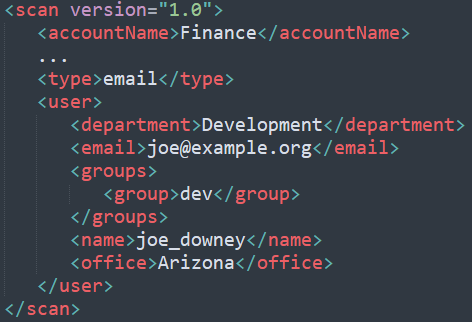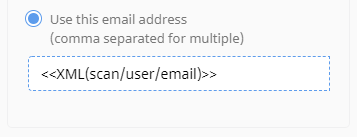XML Merge Method
Usage | Parameters | Examples | Remarks
The XML merge method retrieves metadata from an xml file using an xPath reference.
Usage
|
XML(xPathToElement) |
Read an xml element's value from an xml file located alongside the source file (and named the same) |
|
XML(xPathToAttribute) |
Read an xml attribute's value from an xml file located alongside the source file (and named the same) |
|
XML([XMLFilePath],[xPathToElement]) |
Read an xml element's value from the xml file path provided |
|
XML([XMLFilePath],[xPathToAttribute]) |
Read an xml attribute's value from the xml file path provided |
Parameters
xPathToElement xPath
An xPath referencing an element containing the data to be captured
xPathToAttribute xPath
An xPath referencing an attribute containing the data to be captured
XMLFilePath File Path (Optional)
A file path to the xml file to be read. The path should be relative to the Umango server.
Default: An xml file alongside the file being imported. The xml file should have the same name as the file being read but with the *.xml file extension. This option is only usable with file being imported using a watched folder.
Examples
Example 1
Assuming we are scanning from a PaperCut scan action and including an xml of metadata alongside the scanned file, Umango can capture the authenticated user's email address using the configuration below.
(For configuration of the scan action in PaperCut, please refer to PaperCut's documentation).

Sample XML file from PaperCut

The xPath reference to the user's email address found in the PaperCut XML file
Example 2
In the example below we are capturing the value of the attribute "importance" and using it to help name a file.

Sample XML containing the attribute "importance"

In this example, the result would be "Importance Level HIGH"
Example 3
In the example below we are capturing the value of the element "heading" from an xml file on our network.

In this example, the file would be named "Reminder"
Remarks
None